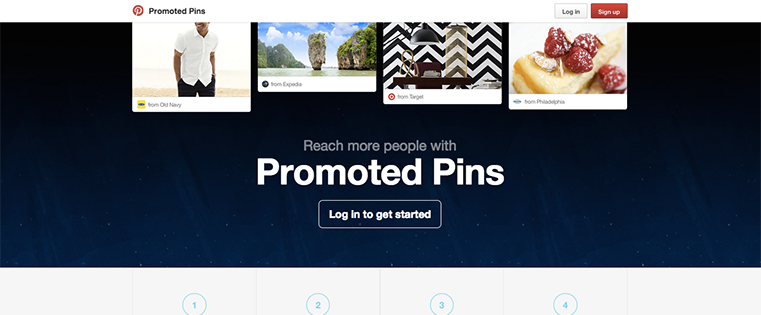 Good ideas catch fire quickly, and Pinterest is the ultimate great idea. Since its launch in March 2010, this easy-to-use, addictive platform has snowballed, swooping up a base of savvy, creative social sharers. As the ultimate replacement for torn-out magazine pages and clippings from newspapers, Pinterest is poised to be the Next Big Thing for brands that rely on visually interesting ideas from its consumers and fans.
Good ideas catch fire quickly, and Pinterest is the ultimate great idea. Since its launch in March 2010, this easy-to-use, addictive platform has snowballed, swooping up a base of savvy, creative social sharers. As the ultimate replacement for torn-out magazine pages and clippings from newspapers, Pinterest is poised to be the Next Big Thing for brands that rely on visually interesting ideas from its consumers and fans.

Pinterest’s explosive expansion, and position as the newest “It Girl” among social media apps, begs the question, “Should my brand be there?” My initial answer is a hesitant “yes,” with that reluctance tempered by the fact that Pinterest represents a platform of limitless opportunity. If you manage a brand’s social media outlets, you should consider the following as you jump on the Pinterest bandwagon.
Stake Your Claim
A quick review of several dozen colleges and universities who have staked a claim on the site reveals low users and empty boards as the rules, not the exceptions. I will reserve my opinion on whether these schools are doing things correctly on Pinterest or just wasting their time for a few months, as most accounts only have activity dating back from December 2011 or later.
As a brand manager, I look at any website that has rocketed to the 36th most popular site in the United States and tenth most popular social networking site and say, let’s at least plant our flag in the ground on Pinterest. Then, enter a holding pattern.
Is It Worth Your Time?
I spend about four hours managing my employer’s social media platforms each week – that’s a pinch in the morning, a dash over lunch, a smidgen at the end of the day and a few minutes on the weekend. At some point, you have to answer a question for yourself: Is Pinterest worth your time?
Candidly, navigating the Wild West of Pinterest will not translate to 70 new prospective students for the fall, or 30 new donors for the next annual giving campaign. With recruitment at the top of everyone’s mind, the cost of adding yet another platform to manage has to have a payoff. Without a crystal-clear connection between efforts and outputs, I can’t justify building Pinterest into my social media routine yet.
Claim Your Niche
Just because I don’t see Pinterest working for my college doesn’t mean that others should dismiss the site. For art and design programs, boards that showcase the work of students, alumni and faculty are ways to curate content internally for use in later web or print publications. For premier college athletic programs, your fans are already creating boards of logos, sweatshirts and game-day memories of thoughtful, personal content. Find these boards, start a conversation with these curators and harness the power of what they do in ways that let them know you value their contributions. (Note: Do not publish, online or otherwise, content from Pinterest without explicit permission from the original artist or source. That’s poor form, and it’ll rightfully get you sued).
It’s Not About Self-Promotion
People who work in communications, marketing and public relations have strong tendencies to (shamelessly) promote their organizations’ brands. Pinterest’s own etiquette guideline, “to avoid self promotion,” turns that attitude on its head. Active participation on the site will require positioning your brand as a resource in ways that are best for your followers, not just in ways that are best for you.
The University of Pennsylvania Career Services profile has over a dozen boards, but I’d like to point out two of them that are pitch-perfect for its audience. Its “What to Wear – Women” board offers precisely the type of information that a new graduate would find valuable, and presenting it visually on Pinterest gives its audience a reason to keep coming back for more. Its board for “Infographics” collects useful statistics related to careers and hiring that have an audience beyond its students and alumni. It has positioned itself as a resource with no references (that I saw) in its boards to itself.
Make “Visual” and “Viral” Part of Your Content Strategy
Even if you don’t hop on Pinterest yet, I predict that it will change the expectations of audiences, particularly female audiences. Start building the types of visual, viral content that is the lifeblood of Pinterest users, and you’ll be prepared for that shift. Good ideas are also eminently sharable, so spend your time wisely on content that has a chance of catching fire across any social media network.
Takeaways:
- Find an honest answer to the question, “Is Pinterest worth your time?”
- Set up an account for your brand, but also start exploring the site as an individual user.
- Determine the niche areas in which your brand excels, and exploit the heck out of it – creatively.
- Don’t dive into Pinterest with the idea that you can promote yourself.
- Make “visual” and “viral” part of your content strategy.

![Pinterest: People Like Pictures, So Start Pinning [Infographic]](http://cdn2.hubspot.net/hub/53/file-1524411007-jpg/blog-files/people-like-pictures-infographic-julia-bucchianeri5.jpg)



